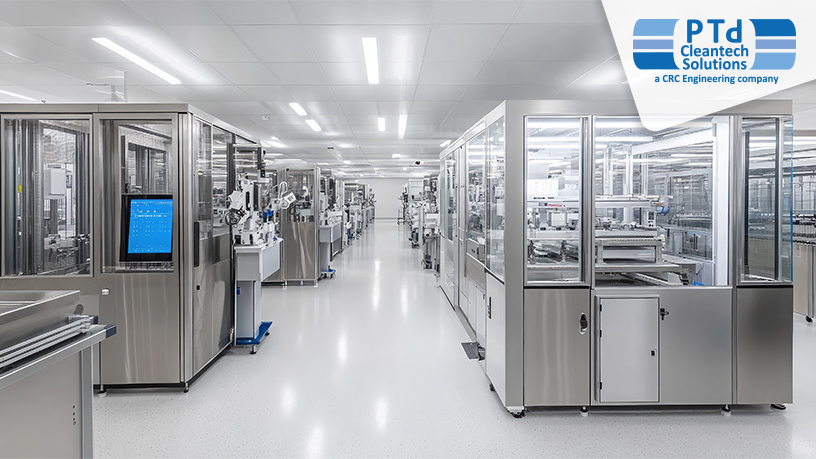Cleanroom design is a very specialised activity that requires a scrutinous eye for detail and a profound understanding of industry principles. Whatever the facility is being designed for; drugs, biotech, or advanced therapy medicinal products; it is essential to avoid critical errors in order to achieve compliance and safety. What follows are five of the most typical cleanroom design mistakes and how our method circumnavigates them, with specific reference to the accuracy needed in ATMP design.
1. Inadequate Airflow and Pressure Zoning
Poor planning of airflow is one of the most common problems in cleanroom design. It is critical to provide laminar flow and manage air change rates in order to prevent contamination. Cleanroom zones, if not properly pressure-balanced, will have contaminants entering from neighbouring spaces and cause the entire system to fail.
We prevent this by performing in-depth airflow simulations at the design stage, so that every cleanroom achieves the right pressure differentials. Our professionals meticulously combine HEPA filtration, HVAC, and zone-specific needs to comply with ISO standards. This is especially critical in ATMP design, where airborne contamination, even at low levels, can jeopardise product integrity as well as patient safety.
2. Overlooking Personnel and Material Flow
Yet another typical mistake is forgetting to provide for the flow of working personnel and materials in the cleanroom. Ill-conceived entry and exit paths, gowning stations, or material pass-throughs can cause cross-contamination and inefficient workflows.
Our design method features a functional layout which clearly demarcates the clean and dirty routes. We apply unidirectional flow wherever feasible, supplemented by pass boxes and airlocks. This strategic design is a key element of our ATMP design process to ensure that human and material flow becomes predictable, controlled, and in line with GMP guidelines.
3. Selecting the Wrong Materials and Finishes
Selecting unsuitable materials for walls, floors, and ceilings can result in issues such as particle shedding and cleaning challenges. These problems not only impact compliance but also drive up maintenance costs and operational downtime.
To prevent this, we define non-porous and easy-to-clean surfaces that are industry-compliant. All materials used in construction are evaluated for use with the targeted cleanroom classification. For ATMP design, we also give particular attention to finishes that can accommodate aseptic conditions and resist aggressive cleaning procedures without compromising over time.
4. Underestimating Utility Integration
A cleanroom is not merely a controlled space; it has to accommodate sophisticated utilities like purified water, clean steam, compressed air, and environmental monitoring. A mistake most frequently made is to regard utilities as an afterthought, not as an essential part of the design.
We integrate utility planning from the initial design phase. This involves spatial distribution, maintenance access, and routing that does not disturb clean zones. Our solution ensures that each utility operates in harmony with the cleanroom environment. With ATMP design, where the processes involved are high-value and sensitive in nature, this coordination is all the more important.
5. Ignoring Future Scalability and Flexibility
Certain cleanrooms are built only for immediate requirements with no regard for future growth or shifting regulations. Such short-term thinking may result in costly re-designs and downtime in operations. In counteraction to this, we follow a modular design strategy that accommodates scalability and flexibility. Our designs take into account future process modifications, possible expansions in capacity, and technological upgrades. Scalability is most critical in projects where changing therapies and regulatory environments require facilities that can expand and evolve without sacrificing anything.
Cleanroom design is a specialised field in which even the slightest mistake can have major repercussions. By steering clear of these five frequent pitfalls, from mismanaging airflow to rigid layout, we provide solutions that rival the highest expectations of performance and regulatory compliance. Our focus on accuracy, particularly in the ATMP design, makes every facility we construct ready for today’s requirements and tomorrow’s challenges alike.

